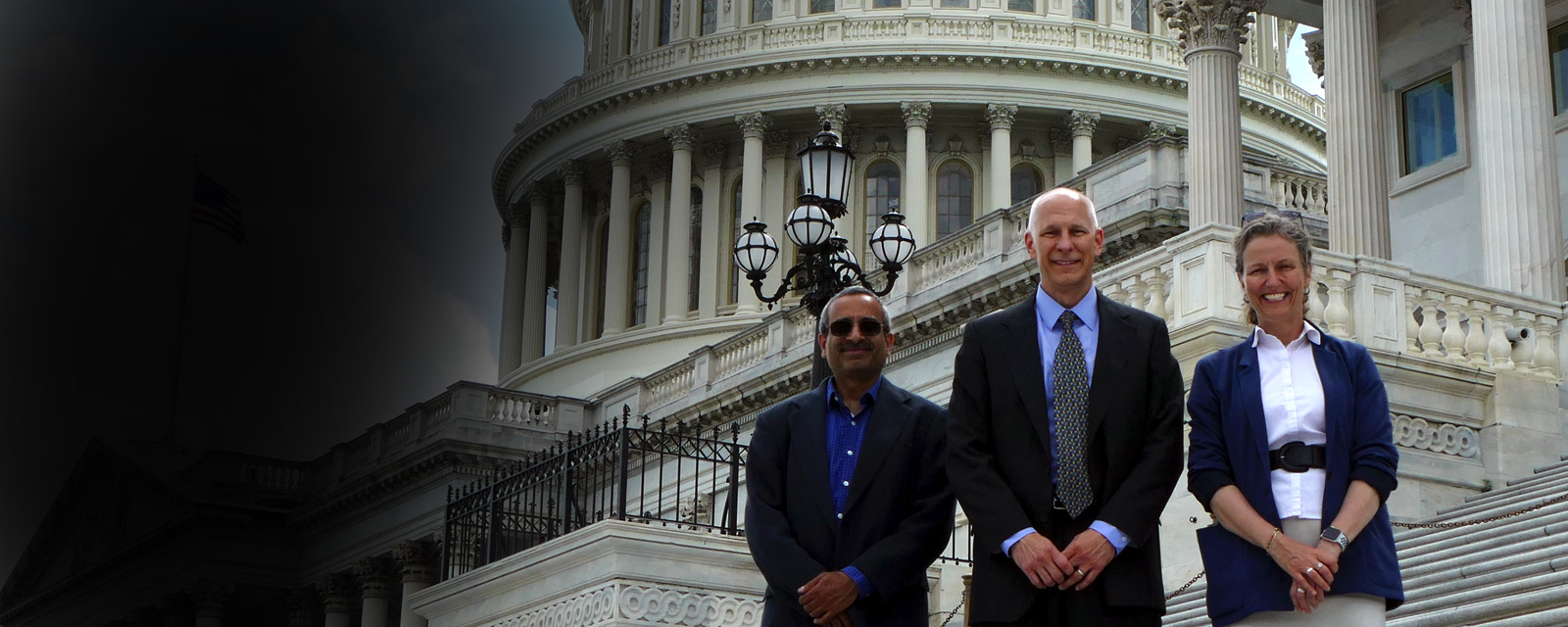Federally-funded research is crucial for biomedical discovery. This requires an FY 2020 budget with stable growth in federally-funded programs that support fundamental research. Scientists compete for funding from agencies including the NIH, NSF and VA, and the work is carried out at colleges, universities and medical centers throughout the country. This research produces discoveries that advance our knowledge while also leading to innovations that spur economic growth.
The American Physiological Society visited Capitol Hill on September 12 to advocate for increased funding for research.
You can help! Tweet about your federally funded research using the hashtag #HillDayAPS. Tag your legislators for added impact. You can find the twitter handles of your Senators and Congress Member on their websites or at this list from CSPAN.
Get more ideas for tweets under the Messaging section on this page.
See where we went by checking out #HillDayAPS and like or retweet us to boost visibility.
The House of Representatives passed 10 of its 12 appropriations bills because it chose to ignore the draconian spending limits put into place under the Budget Control Act of 2011. Instead, the House drafted its funding bills with higher overall budget numbers.
The Senate opted to wait and see if revised spending limits would be passed. This finally happened just before the August recess when Congress passed H.R. 3877, the Bipartisan Budget Act (BBA) of 2019. This bill increased the overall spending level for federal programs and raised the debt ceiling.
When Congress returns to Washington after Labor Day, the House needs to pass 2 spending bills, while the Senate needs to pass its versions of all 12 bills. Compromises will need to be found for the differences between the two sets of legislation, and then the bills must be signed by the President. A particular challenge this year is the fact that the House used a higher overall spending level than the one that was ultimately included in the BBA, which is the basis for the Senate bills.
With the end of the fiscal year just weeks away, Congress will likely need to pass one or more short-term continuing resolutions to keep the government open until FY 2020 funding can be finalized.
FY 2019 | FASEB FY 2020 rec. | House | Senate | |
NIH | $39.1 B | $41.6 B | $41.2 B (+4.7%) | TBD |
NSF | $8.075 B | $9 B | $8.6 B (+6.9%) | TBD |
VA Medical | $779 M | $840 M | $840 M (+7.8%) | TBD |
NASA | $21.5 B | N/A | $22.3 B (+3.8%) | TBD |
Big Picture
We need Congress to finalize FY 2020 funding quickly so research agencies can move forward without interruption.
Tweet about it!DYK? Federal funding for biomedical research goes all over the country. Find out how much goes to your state and district through FASEB’s Funding Fact Sheets.
Tweet about it!
NIH
The $2 billion funding boosts provided in FYs 2016–2019 have put the NIH on a path toward sustainable budget growth. These much-needed increases are helping NIH address critical health problems and emerging challenges through cutting-edge research. APS urges Congress to support this critical effort by increasing the NIH budget by $2.5 billion in FY 2020. This will provide resources for initiatives begun under the 21st Century Cures Act; support an additional 400 young investigators; and allow NIH to invest in key priority areas.
Tweet about it!
NSF
Time and time again we have seen the knowledge gained through basic biological research provide the springboard for applied studies that improve the health of animals, humans and ecosystems. NSF-funded research has led to countless discoveries that could not have been envisioned when the research began. These unforeseen applications have had enormous impact on science, health and the world’s economy. APS urges Congress to provide the NSF with an FY 2020 budget of at least $9 billion. This will allow the NSF to fund an additional 1000 research grants in the coming fiscal year.
Tweet about it!
VA Medical & Prosthetic Research
Funding increases Congress has provided for the VA Medical and Prosthetic Research Program in recent years have allowed clinicians and researchers to expand research in promising areas of science. APS urges Congress to provide $840 million for VA Research in FY 2020. This will enable the VA to continue current research projects while also pursuing new research to meet the needs of our veterans.
Tweet about it!
NASA
NASA sponsors research across a broad range of the basic and applied life sciences, including gravitational biology, biomedical research and the Human Research Program (HRP). The gravitational biology and biomedical research programs explore fundamental scientific questions about the space environment through research carried out both on Earth and aboard the International Space Station. NASA’s HRP conducts focused research—such as determining what astronauts should do to counteract the long-term impacts of weightlessness—with the goal of enabling safe and productive human space exploration. APS urges Congress to restore cuts to NASA’s life sciences research budgets and to increase funding for the Human Research Program.
Tweet about it!Stay Connected
Stay engaged with APS advocacy efforts.

